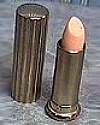
Born 17 Aug 1906; died 5 Dec 1998 at age 92.
Hazel Gladys Bishop was an American chemist and cosmetic executive who made an indelible mark on the cosmetics industry by inventing non-smear ("stays on you not on him") kissproof lipstick. During WW II, as senior organic chemist with Standard Oil, she discovered the cause of deposits affecting superchargers of aircraft engines. She never married. In 1949, after a long series of home experiments, in a kitchen fitted out as a laboratory, she perfected a lipstick that stayed on the lips longer than any other product then available, and began its manufacture. It was introduced at $1 a tube in the summer of the following year. In 1951, a partner forced her out of the $10 million company she created.
Hazel Gladys Bishop was an American chemist and cosmetic executive who made an indelible mark on the cosmetics industry by inventing non-smear ("stays on you not on him") kissproof lipstick. During WW II, as senior organic chemist with Standard Oil, she discovered the cause of deposits affecting superchargers of aircraft engines. She never married. In 1949, after a long series of home experiments, in a kitchen fitted out as a laboratory, she perfected a lipstick that stayed on the lips longer than any other product then available, and began its manufacture. It was introduced at $1 a tube in the summer of the following year. In 1951, a partner forced her out of the $10 million company she created.

Born 17 Aug 1893; died 7 Dec 1960 at age 67.
Walter Karl Friedrich Noddack was a German chemist who discovered the element rhenium (Jun 1925) in collaboration with his wife Ida Tacke. In 1922, he began a long search for undiscovered elements. After three years, the careful fractionation of certain ores yielded element 75, a rare heavy metallic element that resembles manganese. Named rhenium after the Rhine River, it was the last stable element to be discovered. Noddack is also remembered for arguing for a concept he called allgegenwartskonzentration or, literally, omnipresent concentration. This idea, reminiscent of Greek philosopher Anaxagoras, assumed that every mineral actually contained every element. The reason they could not all be detected was they existed in too small quantities.
Walter Karl Friedrich Noddack was a German chemist who discovered the element rhenium (Jun 1925) in collaboration with his wife Ida Tacke. In 1922, he began a long search for undiscovered elements. After three years, the careful fractionation of certain ores yielded element 75, a rare heavy metallic element that resembles manganese. Named rhenium after the Rhine River, it was the last stable element to be discovered. Noddack is also remembered for arguing for a concept he called allgegenwartskonzentration or, literally, omnipresent concentration. This idea, reminiscent of Greek philosopher Anaxagoras, assumed that every mineral actually contained every element. The reason they could not all be detected was they existed in too small quantities.
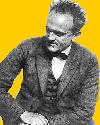
Born 17 Aug 1880; died 23 Sep 1926 at age 46.
Austrian biologist, he claimed to have produced experimental evidence that acquired traits could be inherited. Almost all of Kammerer's experiments involved forcing various amphibians to breed in environments that were radically different from their native habitat to demonstrate Lamarkian inheritance. (This is the idea that what one acquires during one's lifetime is passed on to that person's offspring. If you play guitar, your children will have nimble fingers. Each generation builds upon the past and continues to improve.) When later accused of faking exceptional results with the midwife toad, during a time of depression, he shot himself.
Austrian biologist, he claimed to have produced experimental evidence that acquired traits could be inherited. Almost all of Kammerer's experiments involved forcing various amphibians to breed in environments that were radically different from their native habitat to demonstrate Lamarkian inheritance. (This is the idea that what one acquires during one's lifetime is passed on to that person's offspring. If you play guitar, your children will have nimble fingers. Each generation builds upon the past and continues to improve.) When later accused of faking exceptional results with the midwife toad, during a time of depression, he shot himself.
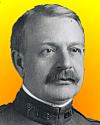
Born 17 Aug 1870; died 29 Dec 1960 at age 90.
American scientist who developed the first successful U.S. typhoid fever vaccine. Russell earned his medical degree in 1893 and was commissed in 1898 as first lieutenant and assistant surgeon in the U.S. Army. In summer 1908, the U.S. Army Surgeon General sent him to Europe to study the experience of the British and German armies in anti-typhoid vaccination. In 1909, Major Russell prepared a laboratory the Army Medical Museum for manufacturing vaccine, and vaccinated volunteers, the first of whom came from the museum and the medical school. By the end of 1910, 10,841 volunteers had been vaccinated. This was made compulsory for military personnel the next year. The reduction in the incidence of the disease was dramatic.«
American scientist who developed the first successful U.S. typhoid fever vaccine. Russell earned his medical degree in 1893 and was commissed in 1898 as first lieutenant and assistant surgeon in the U.S. Army. In summer 1908, the U.S. Army Surgeon General sent him to Europe to study the experience of the British and German armies in anti-typhoid vaccination. In 1909, Major Russell prepared a laboratory the Army Medical Museum for manufacturing vaccine, and vaccinated volunteers, the first of whom came from the museum and the medical school. By the end of 1910, 10,841 volunteers had been vaccinated. This was made compulsory for military personnel the next year. The reduction in the incidence of the disease was dramatic.«
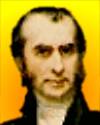
Born 17 Aug 1798; died 5 Apr 1866 at age 67.
English physician and philanthropist who early described (1832) the malignant disease of lymph tissue that bears his name as Hodgkin's disease. He was the most prominent British pathologist of his time and a pioneer in preventive medicine. At Guy's Hospital, he was responsible for the introduction of the systematic arrangement of pathological and anatomical specimens for teaching purposes. In a strange contrast to his great popularity, above all in London, stands the fact that Hodgkin was denied a professional advancement. More and more disappointed by medicine he became an Oriental traveller, making important contributions. He devoted much of his life to philanthropic causes such as the relief of suffering in under-developed countries and the freeing of slaves. more
English physician and philanthropist who early described (1832) the malignant disease of lymph tissue that bears his name as Hodgkin's disease. He was the most prominent British pathologist of his time and a pioneer in preventive medicine. At Guy's Hospital, he was responsible for the introduction of the systematic arrangement of pathological and anatomical specimens for teaching purposes. In a strange contrast to his great popularity, above all in London, stands the fact that Hodgkin was denied a professional advancement. More and more disappointed by medicine he became an Oriental traveller, making important contributions. He devoted much of his life to philanthropic causes such as the relief of suffering in under-developed countries and the freeing of slaves. more
Thomas Hodgkin: Morbid Anatomist & Social Activist, by Louis Rosenfeld. - book suggestion.
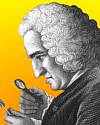
Born 17 Aug 1699; died 6 Nov 1777 at age 78.
French botanist whose method of plant classification was based on anatomical characteristics of the plant embryo. Although he first studied medicine, in 1722 he became subdemonstrator of plants in the Jardin du Roi, Paris. In 1758, Louis XV made him superintendent of his royal garden at Trianon near Paris, which was to contain specimens of all plants cultivated in France. It was here that he devised his system to arrange and catalogued the plants of Trianon. He did not arrange the genera systematically in groups according to a single characteristic, but after consideration of all the characteristics, which, however, are not regarded as of equal value. His brothers, Antoine and Joseph, and nephew Antoine-Laurent, were also botanists.«
French botanist whose method of plant classification was based on anatomical characteristics of the plant embryo. Although he first studied medicine, in 1722 he became subdemonstrator of plants in the Jardin du Roi, Paris. In 1758, Louis XV made him superintendent of his royal garden at Trianon near Paris, which was to contain specimens of all plants cultivated in France. It was here that he devised his system to arrange and catalogued the plants of Trianon. He did not arrange the genera systematically in groups according to a single characteristic, but after consideration of all the characteristics, which, however, are not regarded as of equal value. His brothers, Antoine and Joseph, and nephew Antoine-Laurent, were also botanists.«
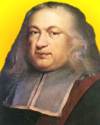
Born 17 Aug 1601; died 12 Jan 1665 at age 63. quotes
French mathematician who has been called the founder of the modern theory of numbers. Together with Rene Descartes, Fermat was one of the two leading mathematicians of the first half of the 17th century. He anticipated differential calculus with his method of finding the greatest and least ordinates of curved lines. He proposed the famous Fermat's Last Theorem while studying the work of the ancient Greek mathematician Diophantus. He wrote in pencil in the margin, “I have discovered a truly remarkable proof which this margin is too small to contain,” that when the Pythagorean theorem is altered to read an + bn = cn, the new equation cannot be solved in integers for any value of n greater than 2.
French mathematician who has been called the founder of the modern theory of numbers. Together with Rene Descartes, Fermat was one of the two leading mathematicians of the first half of the 17th century. He anticipated differential calculus with his method of finding the greatest and least ordinates of curved lines. He proposed the famous Fermat's Last Theorem while studying the work of the ancient Greek mathematician Diophantus. He wrote in pencil in the margin, “I have discovered a truly remarkable proof which this margin is too small to contain,” that when the Pythagorean theorem is altered to read an + bn = cn, the new equation cannot be solved in integers for any value of n greater than 2.
Fermat's Enigma: The Epic Quest to Solve the World's Greatest Mathematical Problem, by Simon Singh. - book suggestion.
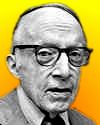
Died 17 Aug 2011 at age 92 (born 17 Jun 1919).
William Kaye Estes was an American psychologist who was a leader in bringing mathematical methods into psychological research. In 1977, he was awarded the National Medal of Science for “his fundamental theories of cognition and learning that transformed the field of experimental psychology. His pioneering methods of quantitative modeling and an insistence on rigor and precision established the standard for modern psychological science.” In his early professional research he partnered with another pioneering psychologist B. F. Skinner in studying animal learning and behavior. The quantitative method they devised to measure emotional reactions is still widely used today. From 1979, Estes focussed on investigating human memory and classification learning.
William Kaye Estes was an American psychologist who was a leader in bringing mathematical methods into psychological research. In 1977, he was awarded the National Medal of Science for “his fundamental theories of cognition and learning that transformed the field of experimental psychology. His pioneering methods of quantitative modeling and an insistence on rigor and precision established the standard for modern psychological science.” In his early professional research he partnered with another pioneering psychologist B. F. Skinner in studying animal learning and behavior. The quantitative method they devised to measure emotional reactions is still widely used today. From 1979, Estes focussed on investigating human memory and classification learning.
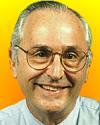
Died 17 Aug 2005 at age 70 (born 30 Dec 1934). quotes
American astrophysicist who pioneered the development of neutrino astrophysics in the early 1960s. He theorized that neutrinos (subatomic particles that have no charge and exceedingly weak interaction with matter) can be used to understanding how stars shine. They are emitted by the sun and stars during the fusion energy creation process, and most are able to pass through the Earth without being stopped. He calculated the expected output of neutrinos from the sun, which created an experimental challenge to explain the unexpected result. He won the National Medal of Science (1998) for both his contributions to the planning and development of the Hubble Space Telescope and his pioneering research in neutrino astrophysics.« more
American astrophysicist who pioneered the development of neutrino astrophysics in the early 1960s. He theorized that neutrinos (subatomic particles that have no charge and exceedingly weak interaction with matter) can be used to understanding how stars shine. They are emitted by the sun and stars during the fusion energy creation process, and most are able to pass through the Earth without being stopped. He calculated the expected output of neutrinos from the sun, which created an experimental challenge to explain the unexpected result. He won the National Medal of Science (1998) for both his contributions to the planning and development of the Hubble Space Telescope and his pioneering research in neutrino astrophysics.« more
Neutrino Astrophysics, by John N. Bahcall. - book suggestion.
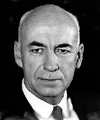
Died 17 Aug 2000 at age 86 (born 8 Oct 1913).
American aerospace scientist, engineer, and a pioneer of the Mercury, Gemini, and Apollo space programs. He developed the X-1, first plane to break the sound barrier. Gilruth directed Project Mercury, the initial program for achieving manned space flight. Under his leadership, the first American astronaut orbited the Earth only a little over 3 years after NASA was created. In 1961, President Kennedy and the Congress committed the nation to a manned lunar landing within the decade. Gilruth was named the Director of the Manned Spacecraft Center and assigned the responsibility of designing and developing the spacecraft and associated equipment, planning and controlling missions, and training flight crews. He retired from NASA in 1973.
American aerospace scientist, engineer, and a pioneer of the Mercury, Gemini, and Apollo space programs. He developed the X-1, first plane to break the sound barrier. Gilruth directed Project Mercury, the initial program for achieving manned space flight. Under his leadership, the first American astronaut orbited the Earth only a little over 3 years after NASA was created. In 1961, President Kennedy and the Congress committed the nation to a manned lunar landing within the decade. Gilruth was named the Director of the Manned Spacecraft Center and assigned the responsibility of designing and developing the spacecraft and associated equipment, planning and controlling missions, and training flight crews. He retired from NASA in 1973.
Died 17 Aug 1969 at age 81 (born 17 Feb 1888).
German-American scientist and winner of the Nobel Prize for Physics in 1943 for his development of the molecular beam as a tool for studying the characteristics of molecules and for his measurement of the magnetic moment of the proton.
German-American scientist and winner of the Nobel Prize for Physics in 1943 for his development of the molecular beam as a tool for studying the characteristics of molecules and for his measurement of the magnetic moment of the proton.
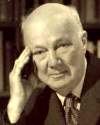
Died 17 Aug 1966 at age 85 (born 2 Jun 1881).
English electronics engineer whose numerous inventions contributed to the development of radio communications. He joined the Marconi Company in 1902, and for his earliest work he devised the elements of direction-finding equipment. Round became Chief of Marconi Research in 1921. He was a prolific inventor. Amongst other inventions he designed the Straight Eight Gramophone Recording System, a large audience public address system which was used to relay King George's speech at the Wembley Exhibitions. A talking picture system he invented was used to record sound on to film during the 1930's cinema boom. In total he produced 117 patents. The last was "Pressure Wave Transmission Arrangements" (1964), at age 83.
English electronics engineer whose numerous inventions contributed to the development of radio communications. He joined the Marconi Company in 1902, and for his earliest work he devised the elements of direction-finding equipment. Round became Chief of Marconi Research in 1921. He was a prolific inventor. Amongst other inventions he designed the Straight Eight Gramophone Recording System, a large audience public address system which was used to relay King George's speech at the Wembley Exhibitions. A talking picture system he invented was used to record sound on to film during the 1930's cinema boom. In total he produced 117 patents. The last was "Pressure Wave Transmission Arrangements" (1964), at age 83.
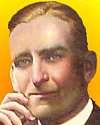
Died 17 Aug 1958 at age 82 (born 19 Mar 1876).
English archaeologist who was director general of the Indian Archaeological Survey (1902-31). His aim was to bring to life Indian culture in the past by uncovering all possible details of her cities, tools, ornaments, laws and customs. In the 1920's, Marshall he began a systematic program of excavations that revealed Harappa and Mohenjo-daro, the two largest cities of the previously unknown Indus Valley Civilization, which he firmly believed was comparable in every way with the ancient civilizations of Egypt and Mesopotamia. He excavated Taxila, Vaisali, Nalanda, Rajagriha and Sarnath; enacted the Ancient Monuments Act (1904), built up a library, reorganised publications and recruited Indians to high positions in the Survey.
English archaeologist who was director general of the Indian Archaeological Survey (1902-31). His aim was to bring to life Indian culture in the past by uncovering all possible details of her cities, tools, ornaments, laws and customs. In the 1920's, Marshall he began a systematic program of excavations that revealed Harappa and Mohenjo-daro, the two largest cities of the previously unknown Indus Valley Civilization, which he firmly believed was comparable in every way with the ancient civilizations of Egypt and Mesopotamia. He excavated Taxila, Vaisali, Nalanda, Rajagriha and Sarnath; enacted the Ancient Monuments Act (1904), built up a library, reorganised publications and recruited Indians to high positions in the Survey.
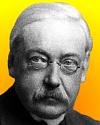
Died 17 Aug 1927 at age 61 (born 7 Apr 1866).
Erik Ivar Fredholm was a Swedish mathematician who is remembered for Fredholm integral equations with applications in mathematical physics and actuarial science. His first paper (1890) was on a special class of functions inspired by the heat equation. His 1898 doctoral dissertation involved a study of partial differential equations motivated by an equilibrium problem in elasticity. Fredhlom also had a career in actuarial science and from 1902 onwards he studyied various questions in this area, including an elegant formula he proposed to determine the surrender value of a life insurance policy. He built a machine to solve differential equations. David Hilbert extended one of Fredholm's integral equations discoving Hilbert spaces on which would be built the quantum theory.«
Erik Ivar Fredholm was a Swedish mathematician who is remembered for Fredholm integral equations with applications in mathematical physics and actuarial science. His first paper (1890) was on a special class of functions inspired by the heat equation. His 1898 doctoral dissertation involved a study of partial differential equations motivated by an equilibrium problem in elasticity. Fredhlom also had a career in actuarial science and from 1902 onwards he studyied various questions in this area, including an elegant formula he proposed to determine the surrender value of a life insurance policy. He built a machine to solve differential equations. David Hilbert extended one of Fredholm's integral equations discoving Hilbert spaces on which would be built the quantum theory.«
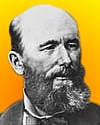
Died 17 Aug 1886 at age 57 (born 6 Sep 1828). quotes
Russian chemist whose theory of organic chemistry structure was an important step towards the modern understanding of organic chemistry. In 1861, he read a paper to a congress of German scientists in which he defined "chemical structure" as the "chemical bond of capicity for the mutual union of atoms into a complex substance." Furthermore, "the chemical nature of a compound molecule is determined by the nature of its component parts, by their quantity and their chemical structure." In his rules for determining the chemical structure of molecules, he recognized the character of radicals to retain their own structure. In his investigation of unsaturated compounds, he supported the idea of multiple bonds. He also worked distinguishing isomers.«
Russian chemist whose theory of organic chemistry structure was an important step towards the modern understanding of organic chemistry. In 1861, he read a paper to a congress of German scientists in which he defined "chemical structure" as the "chemical bond of capicity for the mutual union of atoms into a complex substance." Furthermore, "the chemical nature of a compound molecule is determined by the nature of its component parts, by their quantity and their chemical structure." In his rules for determining the chemical structure of molecules, he recognized the character of radicals to retain their own structure. In his investigation of unsaturated compounds, he supported the idea of multiple bonds. He also worked distinguishing isomers.«
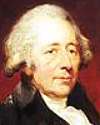
Died 17 Aug 1809 at age 80 (born 3 Sep 1728). quotes
British manufacturer and engineer who financed and introduced James Watt's steam engine. On inheriting his father's silver-stamping business he produced buttons and buckles, and later, other goods of silver and ormolu (a sort of gilded bronze) for the up and coming mercantile classes. After meeting James Watt he became fascinated by the development of steam power and produced steam engines which sold all over the world. In 1786, Boulton established the first steam powered coining presses at his mint at Soho, Birmingham. This replaced hand processes in which workers placed blanks into a hand operated screw-press. more
British manufacturer and engineer who financed and introduced James Watt's steam engine. On inheriting his father's silver-stamping business he produced buttons and buckles, and later, other goods of silver and ormolu (a sort of gilded bronze) for the up and coming mercantile classes. After meeting James Watt he became fascinated by the development of steam power and produced steam engines which sold all over the world. In 1786, Boulton established the first steam powered coining presses at his mint at Soho, Birmingham. This replaced hand processes in which workers placed blanks into a hand operated screw-press. more
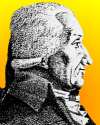
Died 17 Aug 1807 at age 70 (born 16 Sep 1736).
German natural philosopher whose empirical approach strongly influenced the work of Immanuel Kant, and later in his life, Tetens became interested in mathematics, especially in actuarial applications. From 1760, as a teacher of natural philosophy he wrote on diverse topics but later began the development of the field of developmental psychology in Germany. He wrote Philosophische Versuche über die menschliche Natur und ihre Entwickelung (1777) on the origin and structure of knowledge. He changed career after 1789 to the civil service during which time he pursued mathematics. As a statistician he produced an Introduction to the Calculation of Life Annuities (1785) and On the Tetens Mortality Curve (1785).«
German natural philosopher whose empirical approach strongly influenced the work of Immanuel Kant, and later in his life, Tetens became interested in mathematics, especially in actuarial applications. From 1760, as a teacher of natural philosophy he wrote on diverse topics but later began the development of the field of developmental psychology in Germany. He wrote Philosophische Versuche über die menschliche Natur und ihre Entwickelung (1777) on the origin and structure of knowledge. He changed career after 1789 to the civil service during which time he pursued mathematics. As a statistician he produced an Introduction to the Calculation of Life Annuities (1785) and On the Tetens Mortality Curve (1785).«
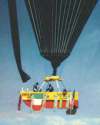
In 1978, the first crossing of the Atlantic Ocean by balloon was completed when three Americans, Ben Abruzzo, Maxie Anderson and Larry Newman, landed their Double Eagle II in France. Their 3,100-mile flight began on 11 Aug 1978 from Presque Isle, Maine and ended 137-hr 6-min later. The helium balloon Double Eagle II was 112- ft high, 65-ft diam., capacity 160,000 cu.ft. with a 15x7x4½-ft passenger gondola named The Spirit of Albuquerque. The underside of the gondola was a twin-hulled catamaran to provide emergency flotation for any unplanned water landing. Double Eagle II was built by Ed Yost. The history of transatlantic balloon crossing included seventeen prior unsuccessful attempts and seven lives lost.«[Image: Double Eagle II gondola]
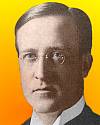
McGregor
In 1904, Ford Motor Company of Canada, Ltd. was incorporated near Windsor, Ontario. The American company was expanding into its first country outside of the U.S., little more than a year after organizing in America on 16 Jun 1903, and selling its first Model A Ford car on 23 Jul 1903. On 10 Aug 1904, Henry Ford had signed an agreement with Canadian entrepreneur Gordon McGregor who started, on 10 Oct 1904, making Fords at his wagon works, with 17 employees. In its first fiscal year, 117 Ford cars were built in Canada. McGregor's persistance paid off. Boosted by Ford's meteoric rise, he became Windor's preeminent industrialist. A century later, Ford's output in Canada had risen to about half a million vehicles a year, employing more than 15,000 people.«
In 1896, the first pedestrian killed by a motor vehicle in Britain was Mrs Bridget Driscoll of Croydon, Surrey. While on a terrace in the grounds of Crystal Palace, London, she was knocked down by a car travelling at 4 mph, and died minutes later of head injuries. The car, owned by the Anglo-French Motor Car (Roger-Benz) Company, was giving demonstration rides to the public, driven by employee Arthur Edsell. It was said that he was talking to the young lady passenger beside him. He had had been driving for only 3 weeks, and had tempered with a belt to cause the car to travel faster. After a six-hour inquest, the jury's verdict was "Accidental Death," and no prosecution resulted against the driver or the company. The first car-driver crash fatality in Britain occurred on 12 Feb 1898.«
In 1891, the automobile electric self-starter was patented.
In 1877, Asaph Hall discovered the second of two moons Mars that he sighted this month. He named this second moon Phobos. Five days earlier, on 12 Aug 1877, Hall had observed the first moon, which he named Deimos.
In 1859, the first air mail in the U.S. took off from Lafayette, Indiana, in a balloon.
In 1835, the wrench was patented by Solymon Merrick of Springfield, Massachusetts.




